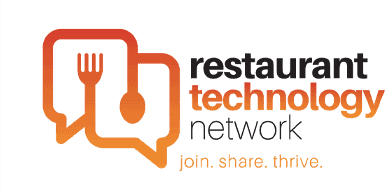Contactless payments were already growing in popularity before COVID, but the advent of the virus has made this already rapidly expanding form of payment explode. And the data is proving that in many cases, guests are spending more when contactless payment options are available than when they have to hand over a card or cash.
According to data from the 2020 Annual U.S. Debit Card Market Data Review,
- 51% of consumers are using Mastercard contactless (credit, debit, wallet).
- 33% of US consumers have switched their top-of-wallet card to contactless.
- 45% of US consumers prefer to shop at stores that have contactless POS.
- 56% of US consumers will continue using contactless post-Covid.
- According to Visa, 31 million Americans tapped a Visa contactless card in March, up from 25 million in November.
- Visa contactless usage has grown 150% since March 2019.
What does all this mean? Friction is virtually gone. No more handing things over at all. Not even the plastic. Just a wave of a card, or a hover of a phone, and the purchase is made. But better than that, COVID has brought on payment methods that require even less contact. A text, a tap on your phone screen, or an online payment is now all it takes. You don’t even have to be in the same building.
For example, POS-integrated solutions like OneDine’s allow guests to easily browse the menu, order, and pay right from their mobile device without having to wait for a server to visit them.
Not only is unnecessary contact eliminated and service streamlined, but guests can also receive customized recommendations by inputting their dietary preferences, favorite cuisines, dishes, spice levels, and more—all with no app required.
Always a silver lining
As undesirable as the reasons for this contactless payment revolution are, the benefits of going contactless are not confined to increasing the safety of the purchasing process. By making friction virtually nonexistent, contactless payments make the purchasing process as secure and painless as possible.
And when choosing to accept an upsell or added amenity is as simple as tapping “purchase,” the result is an increase in overall guest spend.
In fact, according to a study in the International Journal of Economic Studies, “contactless credit card adopters undertake around 9 credit card payments more at the POS within a month than non-adopters (17 vs. 8 transactions) with approximately 5 and 4 transactions more for retail goods and services, respectively (10 vs. 5 and 7 vs. 3 payments).”
Another study from Cardiff Metropolitan University went further to say, “The use of contactless payment was found to have a significant effect on spending habits of students. Common themes were apparent from the data analysis, such as a reduced sense of guilt; and a sub-conscious accumulation of small, impulsive purchases when using contactless payment. This was predominantly attributed to the notion that making a contactless transaction does not always feel like ‘real money,’ in the way that a cash payment does.”
“The main benefits of this technology beside security” according to Joseph Emmi, “are its ease of use and speed, but also because of this, people don’t take the time to think about it, knowing they can tap and it’s done; with nothing else in the middle, and not even time for regret.”
Emmi goes on to cite a recent YouGov poll that suggested that “contactless payments could be proving a little too convenient, with a quarter of 18- to 24-year olds saying they now spend more than they would have done previously as a result of having a contactless card.”
Yes, COVID-19 has had a devastating effect on sales for everyone, but contactless payment options are no doubt reducing that effect by making it less painful to pull the trigger on a purchase decision that otherwise would have taken longer.
And while reduced incomes currently remain a drag on sales, the continued availability of these convenient payment options will no doubt be a very positive sales driver for everything from retail to restaurants as we fight our way forward into more “normal” times.





